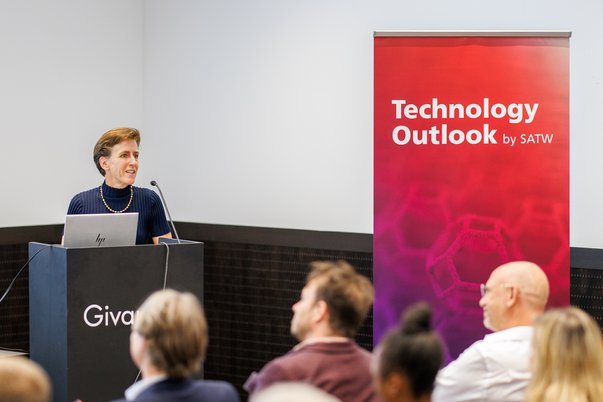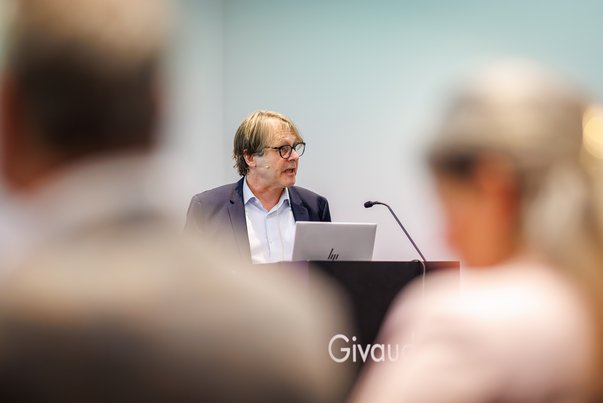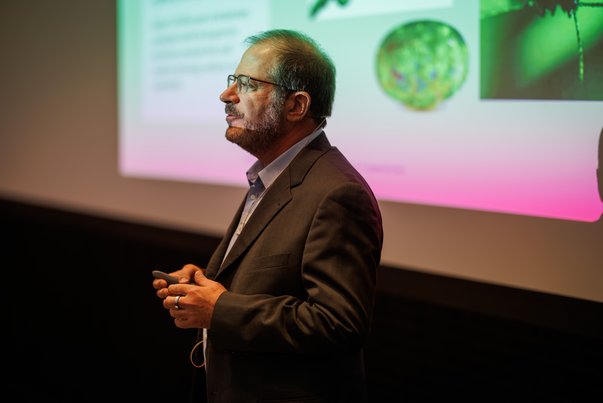

The technology represented in the Technology Outlook is selected in collaboration with the SATW member societies, the thematic platforms and the Scientific Advisory Board. These bodies and organisations are invited to submit proposals. A longlist is created from these proposals, which is then circulated among experts from the specialist areas. The technologies are evaluated according to certain relevance criteria, and a shortlist is then drawn up on the basis of quantitative and qualitative parameters.
The Technology Outlook utilises the collective intelligence of experts from the various fields of technical science. The Outlook is the result of a two-year foresight process. This process is based on the knowledge of 150+ experts. It thus bases its statements on:
Opinions/assessments of experts
Research by the SATW foresight team
Patterns that emerge between the individual technologies and across the various contributions.
All this in comparison and dialogue with members of SATW, the various committees such as the Scientific Advisory Board and the Industry Advisory Board of SATW.
In order to maintain the quality and relevance of the statements, all texts published in the Technology Outlook are subjected to a review process. This means that all articles are read by external bodies and their content and statements are critically scrutinised.
Despite or because of this fundamentally excellent starting position, companies from more traditional sectors and SMEs are finding it increasingly difficult to keep up with the digital transformation, i.e. to keep pace and adapt their business model to the new circumstances.
The fact that there is a discrepancy in Switzerland between top-class basic research and the lagging commercialisation of technologies is a similar issue. Switzerland must promote young entrepreneurship, ensure that there is sufficient venture capital and create conditions that enable knowledge- and technology-intensive start-ups and spin-offs to utilise the corresponding infrastructure.
With the technology contributions, the Technology Outlook focuses on technologies that will be market and product-ready in five to ten years' time, i.e. between applied research and product development. Machine learning and many of the other common artificial intelligence methods are now product-ready and are currently being commercialised with great enthusiasm, so they are well beyond the stage on which the technology contributions in our Outlook focus. Because many interesting AI applications are currently coming onto the market, AI is covered as a topic in the showcases.
At the same time, the digital transformation continues to gather pace; the fact that fewer digital technologies are represented in the Outlook is a sign that this is progressing and that the importance of digital technologies is increasing. The text on national trends also addresses this.
There is no simple answer to the question of how raw material cycles can be closed. And the answer will not be purely technological. It will require laws and regulations, there will have to be a shift in values and a change in awareness among producers and consumers, and this will also affect the way innovation is thought about. This will have consequences for product design, business models, entire industries and probably also for the economic structure as a whole.

The data for the DBP is collected over the entire life cycle of the battery:
Production: Automated systems in the factories record material composition and production data.
Utilisation: The battery management system in the vehicle continuously provides information on charging cycles and the condition of the battery.
Data accuracy: The integrity of the relevant event data is ensured with the BloqSens battery passport using blockchain technology. Once recorded, data can no longer be changed. Audits also ensure the reliability of data collection.
This data is exchanged within a secure, decentralised data room. One example of this is Catena-X, an open and collaborative data network that enables the secure exchange of data between companies in the automotive industry. This ensures that sensitive information remains with the respective companies (data sovereignty) and is not collected in a centralised cloud.
The proportion of electric car batteries with a digital battery passport is still almost zero today.
The EU Battery Regulation will make the passport mandatory for all new industrial and electric vehicle batteries with a capacity of over 2 kWh from 18 February 2027.
The forecast is 100% penetration for all new batteries placed on the market in the EU, which will lead to greater transparency and more efficient recycling.
Data protection is guaranteed by a blockchain-based authorisation system:
Data security: The data is stored on a secure platform.
Access control: Each actor (e.g. vehicle owner, distributor of the battery, recycler, garage, etc.) only has access to the data they need for their specific task based on the "need-to-know principle". Examples:the vehicle owner only sees usage data, the recycler receives information on material composition.
Data for the DBP is collected throughout the battery's life cycle:
Manufacturing: automated systems in factories record material composition and production data.
Usage: The battery management system in the vehicle continuously provides information on charge cycles and battery status.
Data correction: the integrity of relevant event data is ensured by blockchain technology in the BloqSens battery passport. Once entered, the data cannot be changed. In addition, audits guarantee the reliability of data collection.
This data is exchanged within a secure, decentralised data space. Catena-X, an open and collaborative data network that enables the secure exchange of data between companies in the automotive industry, is one example. This ensures that sensitive information remains in the hands of the companies concerned (data sovereignty) and is not collected in a central cloud.
La protection des données est assurée par un système d'autorisation basé sur la blockchain :
Sécurité des données : les données sont stockées sur des plateformes sécurisées.
Contrôle d'accès : chaque acteur (par exemple le propriétaire du véhicule, le distributeur de la batterie, le recycleur, le garage, etc.) n'a accès qu'aux données dont il a besoin pour sa tâche spécifique, selon le principe du "need-to-know". Exemples :le propriétaire du véhicule ne voit que les données d'utilisation, le recycleur reçoit des informations sur la composition des matériaux.

Drug residues are partially biodegraded but are mainly removed by adsorption on activated carbon. This is an established process in wastewater treatment.

Yes, there are numerous examples of bio-inspired materials being used in industry. Velcro fasteners are the original example, while mussel-inspired catechol adhesives are used in surgery. Companies such as BASF, Dow, DSM and other chemical companies are interested in testing new materials in parallel with their bio-based compounds. One example from Switzerland is HeiQ (a spin-off from ETH Zurich), which has been selling textiles with bio-inspired water-repellent surfaces (based on the surface structure of lotus leaves) for years.
There are no set methods, as some researchers focus on effects, while others focus on structures. Understanding is either at a very high level ("Nature has a variety of structures and processes improved by evolution") or at a detailed level ("Why and how do these structures look the way they do, for what purpose did they evolve, and why do they work at all?"), which leads to many fundamental questions regarding cell programming, adaptation to the environment, and many, many simulations. I'm not sure that bio-inspiration can advance understanding per se, but it has certainly raised many new questions that have led to scientific understanding and innovation.